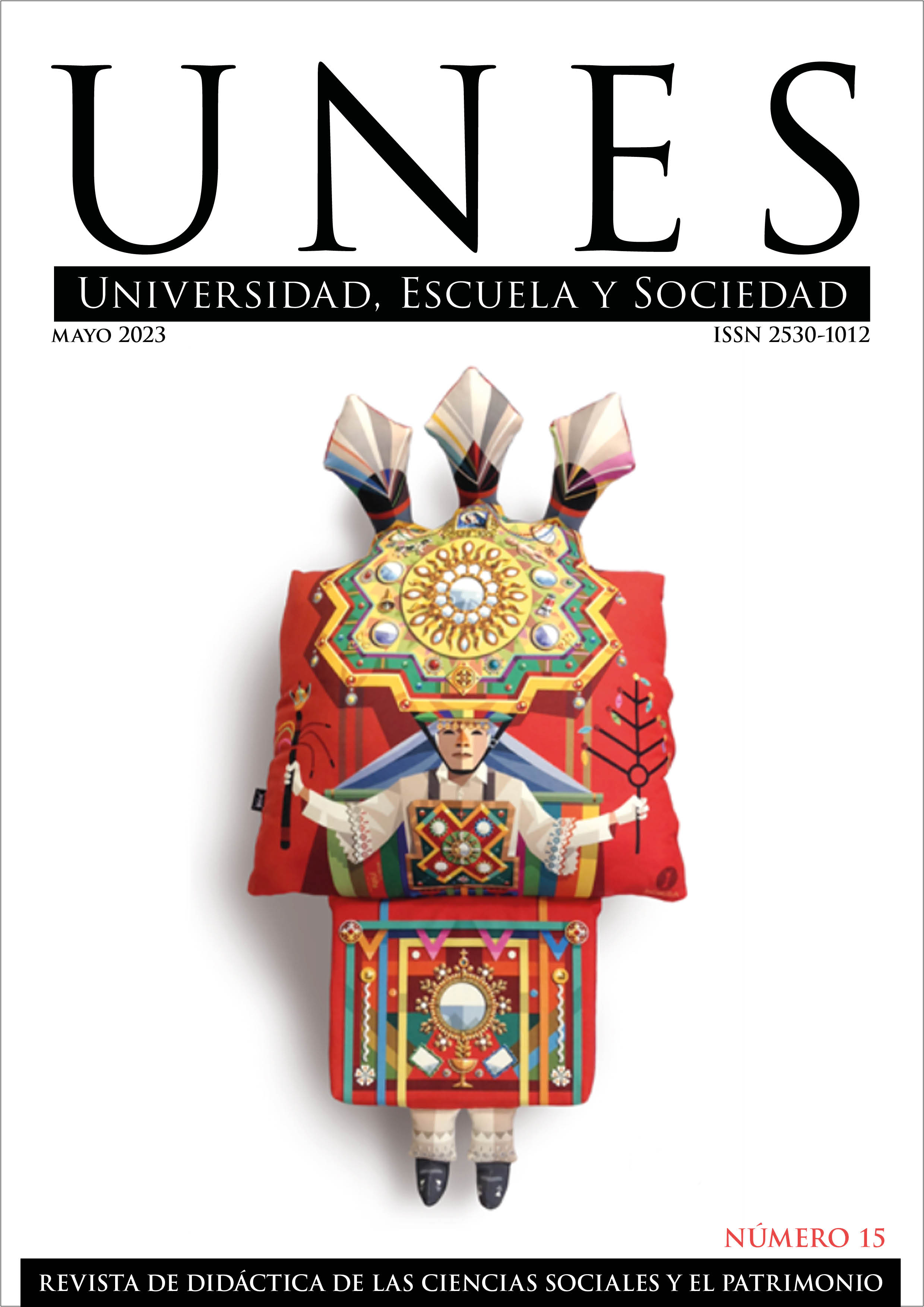Classification of Art Museums according to their educational ICT. A classification from the confluence of museology, pedagogy and neuroeducation
DOI:
https://doi.org/10.30827/unes.i15.27498Keywords:
Museology, Education and Culture, Neuroeducation, Educational Technology, Educational mediaAbstract
The use of ICTs as educational tools in art museums has been normalized for some time now. In the specific case of the use of ICTs for educational purposes in art museums, although it is widespread in almost all art museums, it does not present the same characteristics, uses, and functionalities among them. Therefore, it is necessary to classify these museums based on the educational ICTs they design, develop, and use in order to, on the one hand, conceptualize these educational uses and evaluate the current situation, both generally and particularly; and, on the other hand, provide a basis on which to design and develop powerful educational ICTs according to the educational role to which each museum subscribes.
To arrive at this classification, a common construct has been created that reflects the ideas and concerns of the three disciplines directly involved in the learning process in art museums: museology, pedagogy, and neuroeducation. Based on the resulting indicators from this construct, museums have been classified according to their educational ICTs and characterized according to them, analyzing and treating these data statistically. Finally, this classification has been connected to the theoretical basis on which this common construct is based.
Downloads
References
Ariza, M., Carmona, S., Lachica, J., Moreno, A., Redolar, D., Robles, N., Vilarrot, O. (2016). Neurociència cognitiva. Editorial UOC.
Battro, A., y Fisher, K. (2016). El cerebro educado: ensayos de neuroeducación. Ed. Gedisa.
Bolaños, M. (2012). La Memoria del mundo:100 años de museología (1900-2000). Trea Ediciones.
Carreras, C., Munilla, G., Barragán, C., y Ferran, N. (2005). Patrimonio Digital: un nuevo medio al servicio de las Instituciones culturales. Ed. UOC.
Cildir, Z. (2015). Discussion on the Concept of Visual Culture at Museum within Postmodern Art Education. Journal of Education and Future - Egitim Ve Gelecek Dergisi, 1(8), 67–83. https://www.proquest.com/docview/1764087707?accountid=15299&pq-origsite=primo
Cuenca-López, J.M., Martín-Caceres, M., Ibañez-Etxeberría, A., Fontal-Merilla, O. (2014). La educación patrimonial en las instituciones patrimoniales españolas. Situación actual y perspectivas de futuro. Clío: History, and History Teaching., 40, 1-8. Título de la ponencia (rediris.es)
Cuenca-López, J.M, Perez-Gonzalez, M. (2021) El cuento en la enseñanza del patrimonio: análisis de propuestas didácticas en educación infantil. Revista Investigación en Didáctica de Ciencias Sociales, 8, 243-265.
https://doi.org/10.17398/2531-0968.08.243
Cuenca-López, J.M., Martín- Caceres, M., Estepa, J. (2020) Buenas prácticas en educación patrimonial. Análisis de las conexiones entre emociones, territorio y ciudadanía. Aula Abierta, 49 (1), 45-54.
https://doi.org/10.17811/rifie.49.1.2020.45-54
Del Rio, N. (2013). Educational Resoureces in online Museums of contemporany art. Tyology and scope. Arte, Individuo y Sociedad, 25 (2) 233–245. http://dx.doi.org/10.5209/rev_ARIS.2013.v25.n2.38955
González, B., Jodar, M., y Muñoz, E. (2016). Neuropsicología de la memoria. Editorial UOC.
Hooper-Greenhilll, E. (2007). Museums and Education; Purpose, Pedagogy, Performance. Elieen Hooper-Greenhill Editions.
Kannegieser, E., Atorf, D., y Herold, J. (2021). Measuring Flow, Immersion and Arousal/Valence for Application in Adaptive Learning Systems. Lecture Notes in Computer Science (including subseries Lecture Notes in Artificial Intelligence and Lecture Notes in Bioinformatics), 12793 LNCS, 62–78. https://doi.org/10.1007/978-3-030-77873-6_5
Llonch, N., y Santacana, J. (2010). Claves de la Museografía Didáctica. Milenio.
Márquez, A. y García, J.B. (2022) Metodologías activas y diseño universal para el aprendizaje: Influencia de las pautas DUA en el diseño de tareas, actividades y/o ejercicios de aula. JONED, Journal of Neuroeducation, 3(1), 109-118. https://doi.org/10.1344/joned.v3i1.39661
Moreno-Medrano, A. (2023) TIC educativas en los museos de arte y neuroeducación. La construcción de un puente epistemológico entre la museología, la pedagogía y la neuroeducación. [Tesis de doctorado no publicada]. Universitat Oberta de Catalunya.
Neufeld, P. G., y Delcore, H. D. (2018). Situatedness and variations in student adoption of technology practices. Journal of Information Technology Education., 17, 1–38. https://doi.org/10.28945/3934
Prull, M. W., Lawless, C., Marshall, H. M., y Sherman, A. T. K. (2016). Effects of divided attention at retrieval on conceptual implicit memory. Frontiers in Psychology, 7. https://doi.org/10.3389/fpsyg.2016.00005
Stanisavljevic, Z., Nikolic, B., Tartalja, I., y Milutinovic, V. (2013). A classification of eLearning tools based on the applied multimedia. Multimedia Tools and Applications, 1–38. https://doi.org/10.1007/s11042-013-1802-4
Vincent, N., Ibañez-Etxeberria, A., Asensio, M. (2015). Evaluación de programas de educación patrimonial de base tecnológica. Virtual Archaelogy Review, 6(13), 20-27. https://doi.org/10.4995/var.2015.4367
Wagensberg, J. (2005). The “total” museum, a tool for social change. História, Ciências, Saúde-Manguinhos, 12, 309–321. https://doi.org/10.1590/S0104-59702005000400015
Williams, M. E. (2017). A Noble Balancing Act: Museums, Political Activism and Protest Art. Museum International, 69(3–4), 66–75. https://doi.org/10.1111/muse.12173
Downloads
Published
How to Cite
Issue
Section
License
Copyright (c) 2023 Arturo Moreno-Medrano

This work is licensed under a Creative Commons Attribution-NonCommercial-ShareAlike 4.0 International License.
Authors being published in this journal agree to the following terms:
The authors retain their copyrights but guarantee the journal's right to be the first publisher of the work, licensed under a Creative Commons Attribution-NonCommercial-ShareAlike 4.0 International license, which allows others to share the work, provided that they acknowledge its authorship and initial publication in this journal.
Authors may separately subscribe additional agreements for the non-exclusive distribution of the work published in the journal (for example, including it in an institutional repository or publishing it in a book), with recognition of its initial publication in this journal.
Authors are allowed and encouraged to disseminate their work electronically (for example, in institutional repositories or on their own websites) before and during the submission process, as this may result in productive exchanges, as well as more and earlier citations of the works to be published (See The Effect of Open Access) (in English).






 ISSN-e: 2530-1012
ISSN-e: 2530-1012









